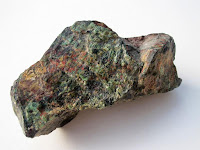(Eumetopias jubatus)
Description and Ecology
The steller sea lion belongs to the pinniped family, which includes marine mammals with front and back flippers, such as walruses, seals, and other sea lions. Steller seals are the largest otariids, or eared seal, with males that can grow up to 11 feet and 2,500 pounds. Their size and light coloring help distinguish them from their close cousin and neighbor, the California sea lion. Also unlike the California sea lion, mature males lack a visible sagittal crest on their heads.
They are a K-selected species, with females reaching sexual maturity at 3-7 years and rarely giving birth to more than one pup. The mothers can take 1-3 years to nurse each pup, and spend equal amounts of time hunting and caring for their young. These pups can grow up and live up to 20 to 30 years old. They prey upon a variety of seafood, such as fish, cephalopods, and occasionally even true seals.
Geographic and Population Changes and Listing
The ESA first listed the steller sea lion’s entire species as threatened in 1990. In 1997, they split them into two distinct population segments for conservation management purposes: the Western DPS on the Alaskan coast west of the 144° W longitude line and the Eastern DPS on the Pacific coast of the US east of that line. Due to sharp population declines, they listed the Western DPS as endangered while the Eastern DPS remained threatened.
The first population count of the Western DPS steller sea lions in 1956-1960 found about 140,000 sea lions in the area. The mid to late 1970s observed their first major population decline, as their numbers dropped down to 110,000. From there the population fell 75% from 1976 to 1990, with the estimated number of steller sea lions at 30,525, and then another 40% between 1991 and 2001, with an average annual decline of 5.4%. Today there are about 46,000 steller sea lions in the Western DPS, but population rates have remained stable.
Thankfully the Eastern DPS has fared much better since its initial listing. Over the past 40 years the population has been increasing 3% per year, with some locations doubling in individuals between 1979 and 2002. The population eventually reached 52,000, and in October 2013 the ESA deemed the Eastern DPS as recovered, then delisted it from its threatened status as a result.
Main Threats
The steller sea lion faces many of the same threats other marine mammals do, such as entanglement in fishing nets and debris, pollution, habitat degradation, and lack of prey. The fishing industry has been a large component in these threats, competing with the sea lions for fish and occasionally killing them so they won’t interfere with fishing activities. Steller sea lions can also become bycatch, animals that accidentally get injured by fishing nets and gear. They also suffer from pollution in the ocean, either choking on or becoming trapped on garbage they mistake for fish. Recovery Plan
The 2008 steller sea lion recovery plan is primarily managed by the National Marine Fisheries Service and comprises of multiple parts. The first part focuses on monitoring and recording populations, using tagging and tracking techniques to keep track of them. The next part involves monitoring prey availability and accessibility for sea lions, and finding ways to make prey more plentiful for them. This part includes fishing regulations such as catch limits, regulated zones, and management plans. The third part deals with public human interaction, and plans on further regulating human waste in the ocean, punishing shootings against sea lions more harshly, and recording the different sorts of take in different areas. The fourth part focuses on evaluating steller sea lions’ causes of death, to see if there are additional factors such as disease which can be threatening the population. Next, the plan focuses on coastal cleanups and reducing ocean debris. Finally, the last part implements a plan to monitor and categorize the Eastern DPS population to determine if it was fit for delisting.What Can You Do?
You may think that there isn’t much you can do for a population that lives near the Alaskan coasts, but there are many things the average American citizen can do for steller sea lions. For example, you can check to see what kinds of fish you eat and learn how they’re caught or harvested to see if they are sustainably acquired. You can also properly dispose of plastic waste and garbage to ensure that it won’t end up in the ocean, where it can ensnare or choke a sea lion. Finally, you can donate to marine research and protection agencies which conduct research for steller sea lions or house injured animals, such as the Marine Mammal Center.
Sources:
http://ecos.fws.gov/roar/pub/planImplementationStatus.action?documentId=1002749&entityId=7115
http://www.adfg.alaska.gov/index.cfm?adfg=stellersealion.main
http://www.marinemammalcenter.org/education/marine-mammal-information/pinnipeds/steller-sea-lion/
























